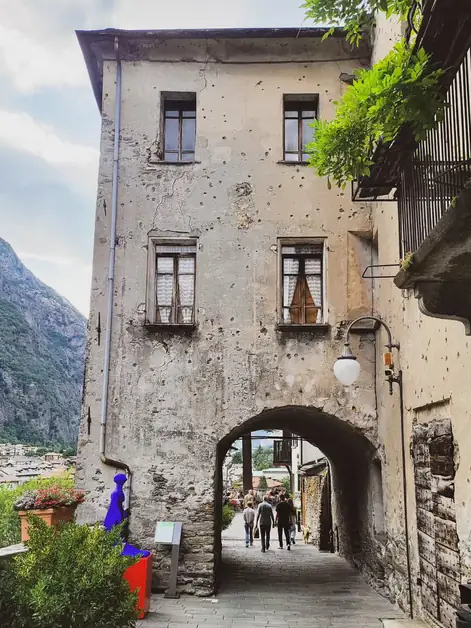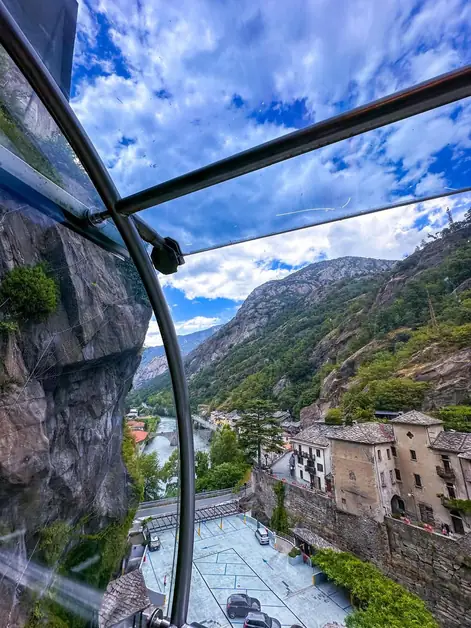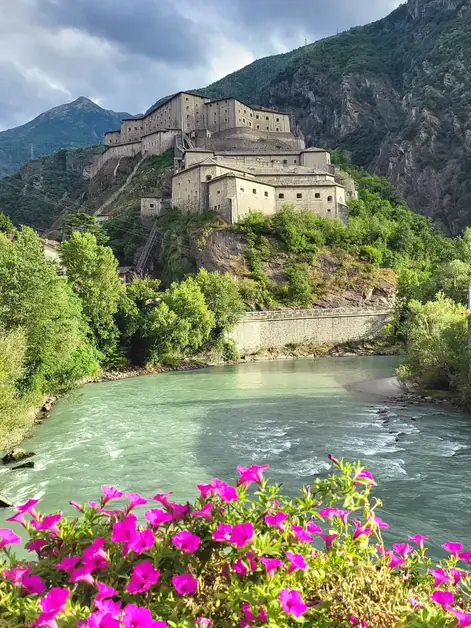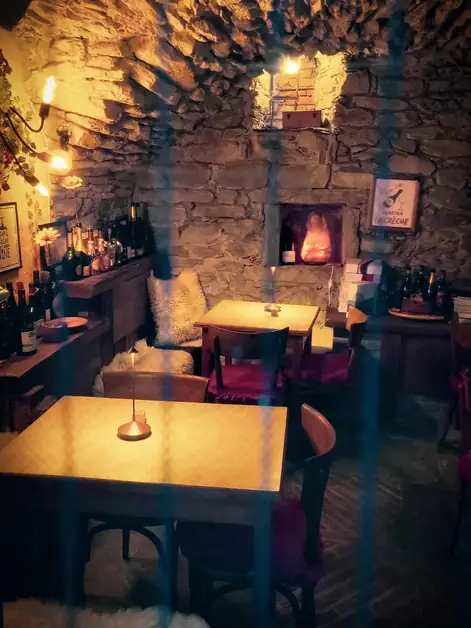Explore the enchanting village of Bard in Aosta Valley
Discover the charm of the village of Bard in Aosta Valley with its history, culture, and architectural beauty.

Where is the village of Bard in Aosta Valley?
The village of Bard is located in the lower Aosta Valley, in a strategic position at the entrance of the region, surrounded by the Alps. It is easily reachable by car via the A5 motorway (exit Pont-Saint-Martin) or by train, with a stop at the Hône-Bard station. The village lies at the foot of a rocky promontory on which the famous Fort Bard stands, but the true soul of the place is its historic center, perfectly preserved and rich in atmosphere.
Why visit the medieval village of Bard?
Visiting Bard means immersing yourself in an authentic medieval village, where every corner tells a story. The cobbled streets, stone houses, wrought iron signs, and small architectural details take you back in time. Bard is one of the smallest villages in Italy, but also one of the most charming. Its tranquil atmosphere and the silence of its alleys make it an ideal destination for those seeking beauty and authenticity.
What is the history of the village of Bard?
The history of the village of Bard dates back to ancient times. For centuries, its narrow passage has been a mandatory route between Italy and France. Already in Roman times, Bard was an important checkpoint along the Via delle Gallie. During the Middle Ages, the village was fortified and maintained a strategic role for controlling transit in the valley. Local noble families, including the Vallaise, made it a protected place, building palaces and towers that are still visible today.
What to see in the historic center of Bard?
The historic center is pedestrian and can be comfortably visited on foot. Along the main street, called Rue de l’Industrie, you will encounter noble palaces, ancient inns, and artisan shops. Among the most significant buildings are: Palazzo dei Nobili Vallaise, with a stone facade and cross windows. Casa Nicole, a 15th-century building with original wooden decorations. The medieval mill, now restored and open for visits. The parish church of the Assumption of Mary, with a neoclassical facade and baroque interiors. Many buildings today host cultural spaces, art galleries, temporary exhibitions, and small museums.
What is the experience of a walk in the village of Bard?
Walking through Bard is a sensory experience: you walk slowly, listen to the sound of your footsteps on the stones, admire glimpses between the roofs, and perceive the scent of the mountains. The village is small, but every corner holds a surprise: a wooden portal, a sculpted fountain, a panorama over the Dora Baltea. Sitting in one of the small squares with a coffee or entering an artisan shop makes the visit even more engaging.
When to visit Bard to best experience the village?
Bard is enchanting in every season. In spring and summer, flowers adorn the balconies and the air is fragrant. In autumn, the foliage of the mountains creates a backdrop of warm colors. In winter, with snow, the village takes on a fairy-tale atmosphere, perfect for suggestive photographs. The climate is milder than in other areas of Aosta Valley, making the visit pleasant even in the colder months.
Are there events or festivals in the village of Bard?
Yes, the village hosts various cultural events, markets, and fairs throughout the year. Among the most notable is the medieval reenactment “Bard in Festa,” which transforms the village into a village of yesteryear with historical costumes, music, artisans, and traditional food. Additionally, during the Christmas holidays, Bard is adorned with lights and decorations, with stalls and atmospheres of yesteryear.
Is the village linked to Fort Bard?
Fort Bard overlooks the village and is an integral part of it from a landscape and historical perspective. However, you can visit Bard without climbing to the Fort. The village itself is a complete attraction, thanks to its architectural heritage, history, and unique atmosphere.
Where to park to visit the village of Bard?
Visitors can leave their cars in the paid parking lots located at the entrance of the village, in the lower area. From there, you can access the historic center on foot in just a few minutes. The village is completely pedestrian, so it is advisable to wear comfortable shoes.
Where to eat in Bard Aosta Valley?
In the village, there are several trattorias and cafes where you can enjoy typical Aosta Valley dishes such as Valpellinentze soup, polenta concia, or local cured meats. Many establishments overlook the main street or small squares, also offering a pleasant break with a view of the village or the mountains.




